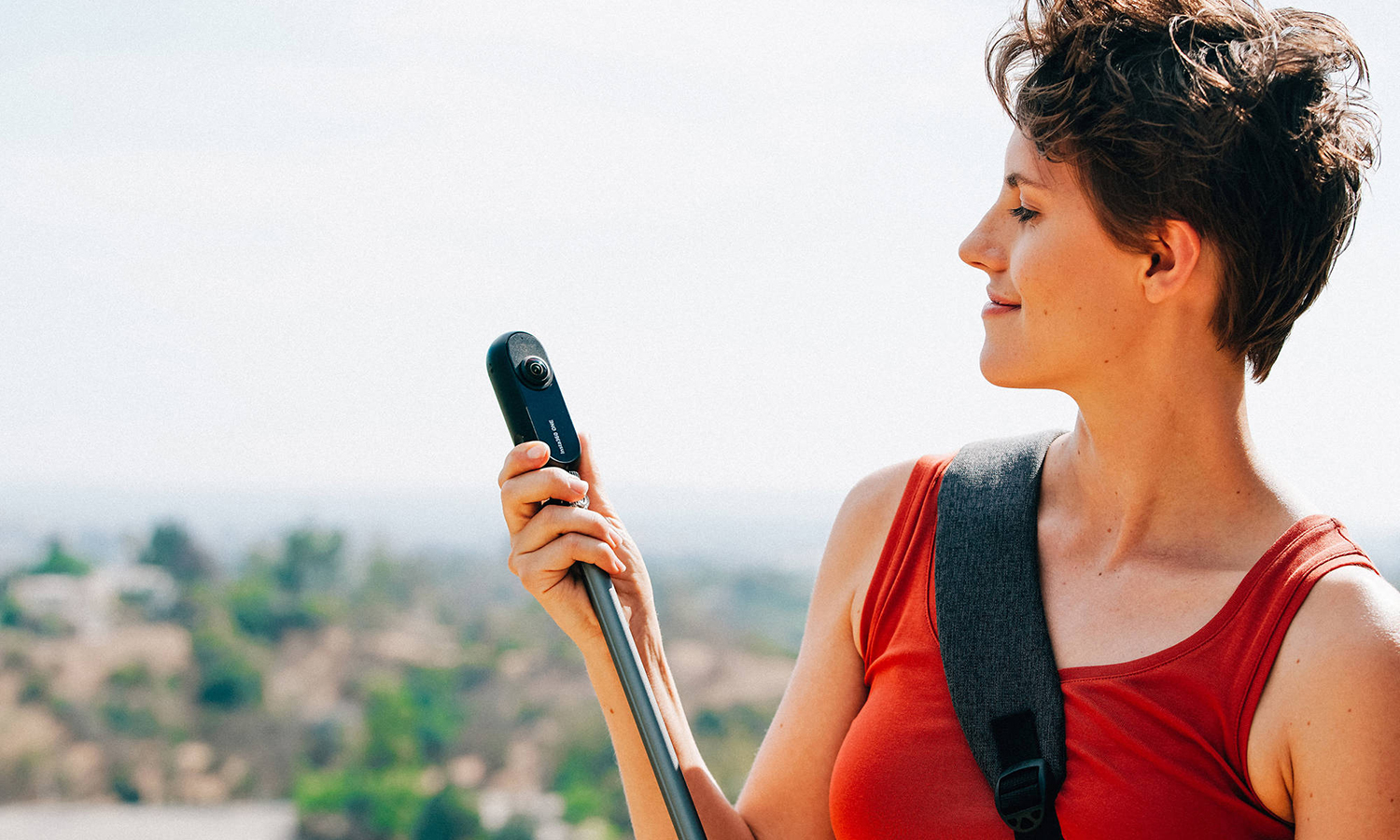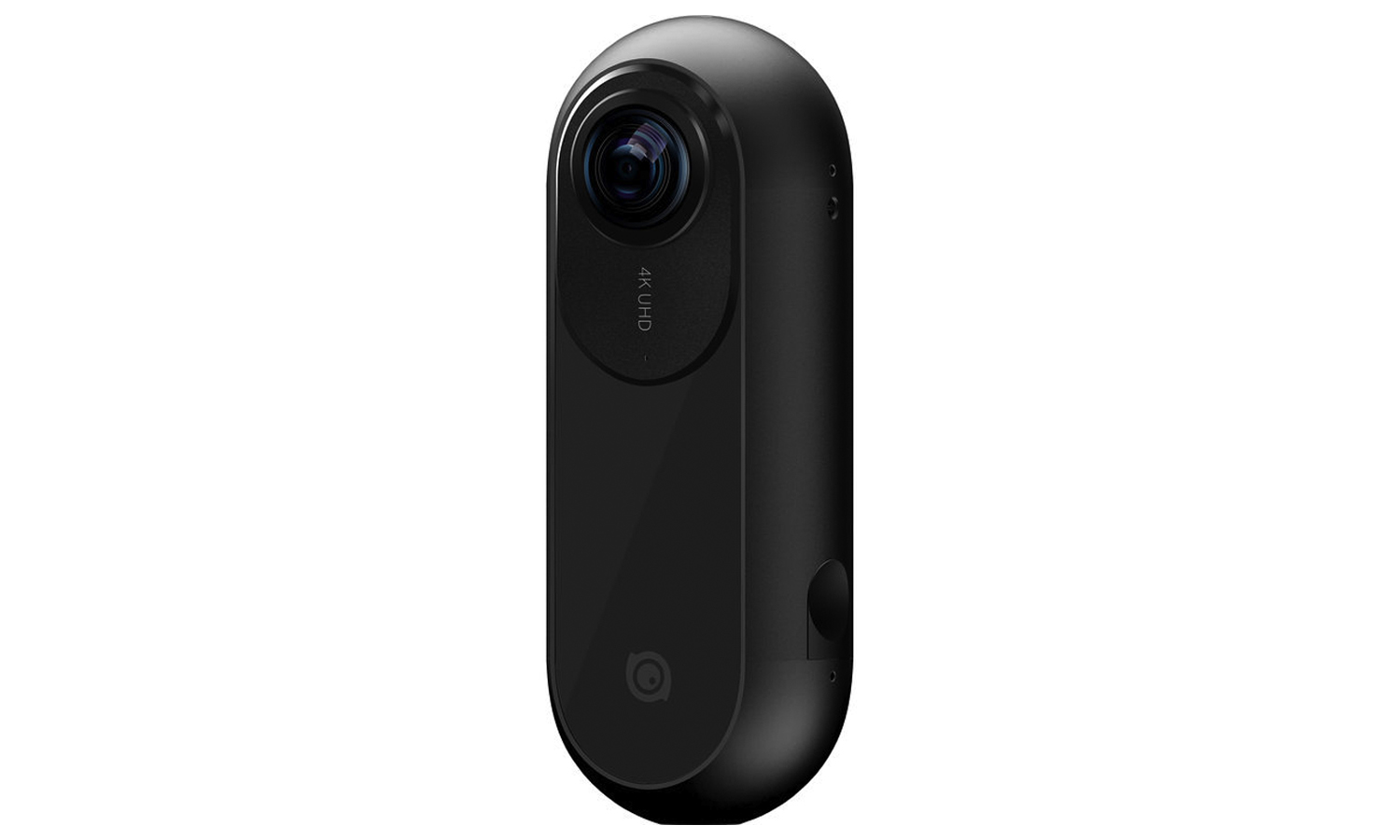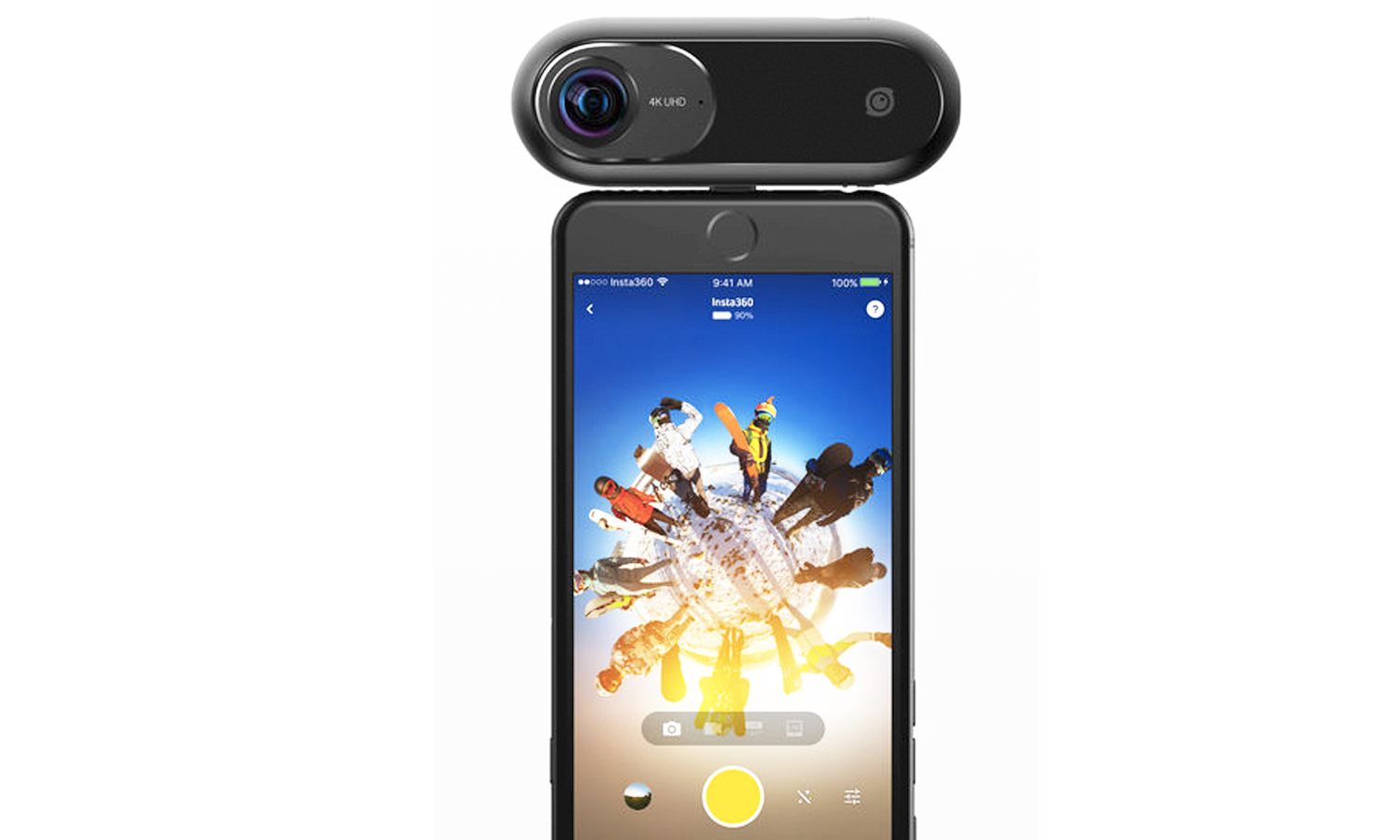Tom's Guide Verdict
The Insta360 One is a 360-degree camera that takes great pictures for its size and has a unique "bullet-time" feature.
Pros
- +
Is small and portable
- +
Takes 4K photos, video
- +
Doesn't have to be plugged into a phone
- +
Has a fun "bullet-time" video feature
- +
Works with Android and iOS
Cons
- -
Lightning connector is hard to remove
- -
Have to hold phone upside down when using app
Why you can trust Tom's Guide
I took the blue pill. Not only does Insta360’s newest—and best—360 camera, the Insta360 One, shoot in 4K, but it includes a fun “bullet time” mode that lets you create videos that look like you’re in The Matrix. At $299, it's more expensive than most entry-level 360 cams but has some great features that make it worth the price. Be sure to check out all of our top picks on our best 360 cameras page.
Editor's Note (12/8/17): The Insta360 One now works with Android phones. We have updated this review to reflect that change, and increased its rating to 4/5.
Pocketable Design
The Insta360 One is rectangular, with each of its long ends rounded off. At 3.8 x 1.4 x 1.4 inches, it's roughly the same length as the Samsung Gear 360. But it's not as wide where the lenses are, so it will fit into a pants pocket better. I also like that the Insta360 One comes with a plastic case, which not only protects the lenses but also snaps into the bottom of the camera to act as a sort of mini selfie stick when in use.

On each of the long sides is a camera lens; the top edge has a small power/shutter button, while the underside has a retractable Lightning connector that plugs into an iPhone. (An Android version includes a microUSB adapter). I wish the Lightning connector were spring-loaded; I had to pry it out every time I wanted to connect the camera to my phone.

There's also a slot for a microSD card, as well as a microUSB port for charging the camera's battery. Next to the microSD card slot is a traditional tripod screw mount.
Unlike the Samsung Gear 360, which fully works only with Samsung smartphones (you don't get all of its features on iPhones), all of the Insta360 One's capabilities are available on Android and iOS devices. As with the Gear 360, you can connect to the Insta360 One via Bluetooth and use your phone as a remote viewfinder.
Performance: Great for the Size
For a 360 camera this size, the Insta360 One takes very good photos. Still images are captured at a resolution of 6912 x 3456, higher than those taken by the Samsung Gear 360 (5472 x 2736). The Insta360 One also gives you the option to save photos as RAW files, which is a nice touch.

Outdoors, the Insta360 captured a much sharper picture than the Gear 360. In this shot, you can clearly see more details in both my hair and the sidewalk around me. However, Samsung's camera did a better job of negating the bright sun; a red brick building looks less washed out in the Gear 360's image. Colors were also more vivid in the Gear 360's photos.

Click to view as interactive 360: Insta360 One | Samsung Gear 360

Indoors, the Insta360 did a better job of compensating for bright lights. A sign reading "Mozzarella E Olive" was much more legible than it was in the image taken by the Gear 360. As with the outdoor shots, the Insta360's indoor photos were also sharper.

Click to view as interactive 360: Insta360 One | Samsung Gear 360

I then took the two cameras to the Santiago Calatrava-designed World Trade Center transit hub. Here, both cameras struggled; most of the numerous white vertical ribs looked wobbly in both photos. Still, the Insta360 One edged out the Gear 360, capturing more details both near and far; my red gingham shirt looked sharper, as did a store sign in the distance.

Click to view as interactive 360: Insta360 One | Samsung Gear 360

In a shot inside a train station waiting room, the Insta360 One image was much more detailed; not only can you clearly see the grates on the air vents atop the wooden seats, but you can easily read a sign. On the photos from the Gear 360, those things are muddy. The Insta360 One also captured the stained-glass ceiling in much better detail.

Click to view as interactive 360: Insta360 One | Samsung Gear 360

Bullet-Time Video: Matrix-Style
The Insta360 One can shoot video at 840 x 1920 at 30 frames per second and 2560 x 1280 at 60 fps, but perhaps its coolest feature is its "bullet time" mode. Included is an orange cord that attaches to the camera's tripod mount. You then activate slow-motion mode on the camera, which records video at 128 fps, and then whip it around your head. (You can also use a selfie stick instead of the cord.)

Then, after connecting the camera to your phone, pull up the clip you recorded in the app. Here, you have the option of slowing the action by half, one-quarter or one-eighth the original speed; cutting the clip to your desired length, and then exporting it.
It was pretty easy to figure out, and the resulting video looked awesome. A neat feature in the app eliminates the tether from the video and keeps you in the center of the frame. I wasn't exactly Neo dodging bullets, but the effect was pretty great.
Feature-Filled App
As with the company's other apps, the Insta360 One app launches upside down. This makes sense because the camera attaches to the bottom of your phone, but it's always a little disorienting.

Within Insta360's app, you can retouch photos by adding various filters, and there's even a beautify feature to make your face look prettier. The app also lets you fix stitching issues, as well as view photos and videos using a VR headset.
The app also gives you a multitude of sharing options, including Facebook, Instagram, YouTube and Twitter. You can also set up livestreaming to YouTube, Facebook and Periscope.
Bottom Line
The $299 Insta360 One is about $100 more than the Samsung Gear 360, but it may be attractive to those who are frustrated by the Gear 360's lack of full compatibility with non-Samsung phones. The Insta360 One's generally better-quality images, as well as its ease of use and unique features, make the Insta360 One our favorite 360-degree camera. If you're looking for a standalone 360 camera, we recommend you check out our Insta360 One X2 review; it's more expensive, but it's an excellent device.
Credit: Insta360

Michael A. Prospero is the U.S. Editor-in-Chief for Tom’s Guide. He oversees all evergreen content and oversees the Homes, Smart Home, and Fitness/Wearables categories for the site. In his spare time, he also tests out the latest drones, electric scooters, and smart home gadgets, such as video doorbells. Before his tenure at Tom's Guide, he was the Reviews Editor for Laptop Magazine, a reporter at Fast Company, the Times of Trenton, and, many eons back, an intern at George magazine. He received his undergraduate degree from Boston College, where he worked on the campus newspaper The Heights, and then attended the Columbia University school of Journalism. When he’s not testing out the latest running watch, electric scooter, or skiing or training for a marathon, he’s probably using the latest sous vide machine, smoker, or pizza oven, to the delight — or chagrin — of his family.
